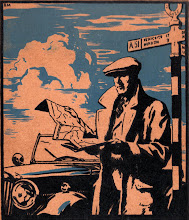
Goat Island was formed in the Bindon Landslip on the East Devon coast on December 24-25th. 1839. An irregular coastal strip of arable land, about three-quarters of a mile in length and about one field in breadth slumped and was projected forward into the sea leaving a deep chasm behind it. The area, now known as Goat Island can still be identified in the Axmouth to Lyme Regis Undercliffs National Nature Reserve. The chasm also remains, though choked with dense woodland and prolific undergrowth. Low level stewardship on Goat Island has helped to retain an area of chalk grassland and an especially fine habitat for butterflies and orchids.

We walked to Goat Island via Stepps Lane and the South West Coast Path – some of it is rough walking with steep and irregular steps to negotiate but not exceptionally strenuous. Much of the route is graced with fine sea views and the Undercliff area offers a uniquely wild experience. Goat Island itself is mostly grassland and scrub with views to the north of the chasm and to the south, a view of the foot of the Landslip and the open sea. Yesterday, May 31st. we had just about maximum visibility with a clear sight of Portland Bill to the east and Start Point to the south-west. It’s not the place for a barbecue or picnic and access is not widely publicised to minimise the impact of human presence on the much valued and unique diversity of plant and animal life for which Natural England is responsible. In the past access was virtually unrestricted and Landslip Cottage (as shown in postcard) served refreshments to the many visitors.
































